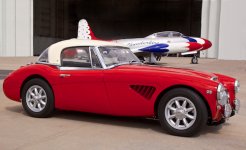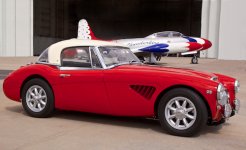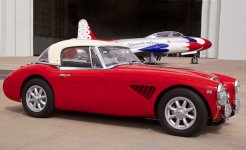HealeyPassion
Jedi Warrior
Offline
Gentlemen,
Regarding the factory tri-carb intake SU manifolds ....does anyone know why the factory changed from the .75" balance tube to the 1" balance tube during the production run?
I have always assumed (never a good thing), that it was done because the .75" balance tube version was causing problems (tuning?...running?) with the triple SU's and the larger 1" balance tube was needed to fix the problem. Since the factory (okay, works) didn't generally make running changes to a production model (except at the end of production when they were using up old parts or integrating new parts... and neither of these conditions applies to the tri-carb models).
I'll bet someone knows!
Cheers,
Steve

Regarding the factory tri-carb intake SU manifolds ....does anyone know why the factory changed from the .75" balance tube to the 1" balance tube during the production run?
I have always assumed (never a good thing), that it was done because the .75" balance tube version was causing problems (tuning?...running?) with the triple SU's and the larger 1" balance tube was needed to fix the problem. Since the factory (okay, works) didn't generally make running changes to a production model (except at the end of production when they were using up old parts or integrating new parts... and neither of these conditions applies to the tri-carb models).
I'll bet someone knows!
Cheers,
Steve


 Hi Guest!
Hi Guest!

 smilie in place of the real @
smilie in place of the real @
 Pretty Please - add it to our Events forum(s) and add to the calendar! >>
Pretty Please - add it to our Events forum(s) and add to the calendar! >> 


